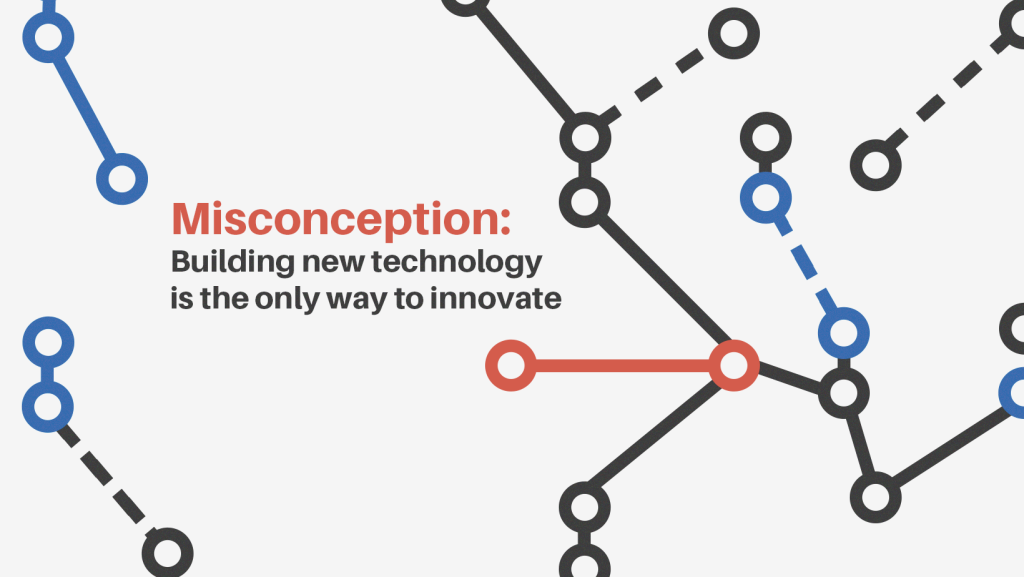It is a common misconception that innovation is all about building new technology.
Newly launched products and technologies like the latest smartphones constantly dominate headlines and are hailed as innovations in media coverage. The products and services of Apple, Tesla, and Amazon are commonly featured in publications and are probably at the top of people’s minds when thinking about innovation.
The visibility and coverage that new products and technologies get explains why innovation is commonly associated with the creation of new products and technology.
However, there are many more ways businesses innovate that are often behind the scenes or are not popularly known.
Innovation is not just building new technology
Innovation is the creation and capture of new value. It helps a company grow and become more versatile, adaptable, and resilient.
While this can be done by building new products and technology, there are more ways to innovate. Especially as we are nearing the end of the pandemic, more and more opportunities to innovate will arise.
Organizations will have to identify and take advantage of these innovation opportunities. And one way they can identify opportunities is by expanding their definition of innovation beyond building new technology.
Doblin, a global innovation firm, identified 10 types of innovation and classified them into three groups. The most familiar innovation type group focuses on innovating the business’s offerings. This includes the product or service itself and the complementary products and services that surround the main offering.
The second group of innovation types concerns a business’s configuration and systems. These may come in the form of innovating a company’s profit model, partner network, organizational structure, and internal processes. For example, an innovation under this group can come in the form of reorganizing the leadership structure of a company to make management and internal processes more efficient.
The last group of innovation types concerns the customer experience aspect of a business. These may touch on branding, customer engagement, delivery channels, and product service. Improving customer service by streamlining and automating processes can be an example of innovation under this group.
While the last two groups of innovation types won’t necessarily result in the creation of a new product or technology, they still add value to the company in many ways such as making operations run more efficiently, improving customer satisfaction and increasing employee morale.
What do these innovations look like in the real world? Here’s how some well-known companies innovated various aspects of their business.
Netflix: Innovating the media rental price model
Back in 1998, Netflix started as a DVD rental service. Similar to their competitors, customers could visit their website, browse their collection of films, and rent a DVD online.
In the years following, Netflix outmaneuvered its original media rental competitors by innovating their product, profit model, and delivery channel.
In 1999, the company was the first to offer a subscription service, which allowed its customers to rent unlimited DVDs for a fixed price. They introduced this subscription price model for their media rental service at a time when one-time media rentals were the standard. Their main competitor, Blockbuster, only began offering a subscription service five years later in 2004.
By 2003, Netflix had over 1 million members on their subscription service which showed the success of their, at the time, new price model.
Netflix, later on, brought this subscription price model onto its newly-launched online streaming platform, paving a new way for the company to deliver its services.
This combination gave customers a new and more convenient avenue to instantly access films, TV shows, and documentaries. Now, customers would not have to wait for a DVD to arrive in the mail, and return it at the end of the rental period. Their competitors, however, stuck to the physical rental of DVDs.
Netflix’s achievements in recent years are owed to the successful innovation of its media rental service, online streaming service, and pricing model.
The innovations allowed Netflix to rapidly expand internationally in just a few years. In 2021, just two decades since the company started, Netflix reported that it had over 200 million subscribers around the world.
This success story highlights that it is important for all organizations to innovate their businesses in ways beyond creating new technologies. Years ago, Netflix correctly identified what services, delivery channels, and pricing models would resonate with customers so they could capture the market and grow their business.
Just like Netflix, there are many opportunities for your business to innovate beyond creating new technology.
Talk to our innovation experts today and explore ways to innovate the different aspects of your business.

